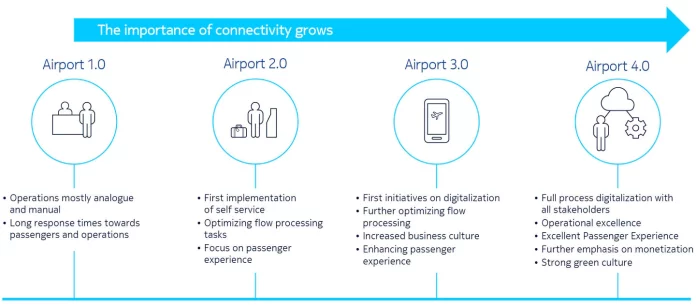Airport 4.0 combines connectivity, automation, AI, robotics, digital twins
Nokia’s vision for Airport 4.0, as articulated in a recent piece titled, “The time for airports to digitalize is now,” encompasses a range of wireless and wired technologies working together to digitalize processes, drive operational and passenger experience excellence, monetization and sustainability.
This as compared to Airport 1.0 which was analogue and manual; Airport 2.0 which included the first steps toward self-service and process optimization; and Airport 3.0, marked by “increased business culture,” and early digitalization investments.
Using a range of technologies, including private networks, Nokia sees airport authorities taking “operational and situational awareness to a whole new level,” reducing costs, and realizing “non-aeronautical revenues.”
According to Global Public Safety and Aviation Practice Lead Richard van Wijk, “Connectivity can no longer be treated as a commodity. It is a strategic asset that is as important to an airport as the runway.”
Nokia has been aggressively talking up, and selling, 4G and 5G private network solutions into industrial verticals for the past few years and, in the case of airports, sees Wi-Fi and public cellular networks as “woefully” incapable of meeting mission-critical needs of an airport.
Thomas Rehberg, head of the company’s Airports and Airlines business, said, “A private wireless network allows an airport to cut the wires while extending pervasive broadband connectivity throughout the terminal. It is the ideal solution for increasing asset location flexibility as well as for providing quick, cost-effective connectivity to new assets.”
The company delineates private wireless network applications that benefit both airside and land-side operations, including connecting vehicular-mounted cameras to augment CCTV and improve incident response time for the former, and contactless biometric screening and AI/ML-based resource allocation tools for the latter.

